Advanced protection with EDR , XDR and MDR
2022 Views |
Endpoint Detection and Response (EDR), also referred to as endpoint detection and threat response (EDTR), is an endpoint security solution that continuously monitors end-user devices to detect and respond to cyber threats like ransomware and malware.
Coined by Gartner’s Anton Chuvakin, EDR is defined as a solution that “records and stores endpoint-system-level behaviors, uses various data analytics techniques to detect suspicious system behavior, provides contextual information, blocks malicious activity, and provides remediation suggestions to restore affected systems.”
Endpoint detection and response (EDR) is a cybersecurity solution that captures all endpoint activity and leverages advanced analytics to provide real-time visibility into the health of all endpoints; detect anomalous activity; alert the information security (Infosec) team to events; and provide remediation suggestions and capabilities to respond, stop an attack in progress or limit its spread.
Endpoint detection and response solutions have the following capabilities:
- Endpoint monitoring and event recording
- Data search, investigation and threat hunting
- Alert triage or suspicious activity validation
- Suspicious activity detection
- Data analysis
- Actionable intelligence to support response
- Remediation
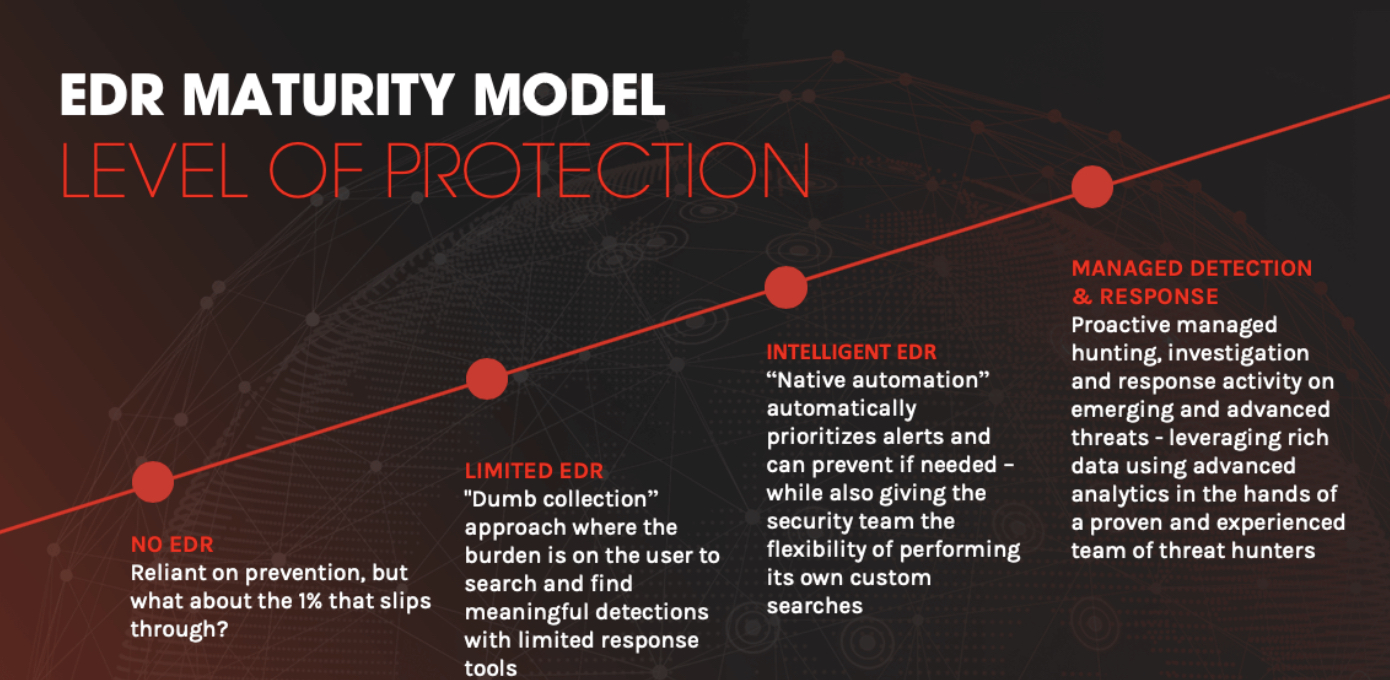


Extended detection and response (XDR) collects threat data from previously siloed security tools across an organization’s technology stack for easier and faster investigation, threat hunting, and response. An XDR platform can collect security telemetry from endpoints, cloud workloads, network email, and more.
With all of this enriched threat data filtered and condensed into a single console, XDR enables security teams to rapidly and efficiently hunt and eliminate security threats across multiple domains from one unified solution.
Extended detection and response (XDR) streamlines security data ingestion, analysis and workflows across an organization’s entire security stack, enhancing visibility around hidden and advanced security threats and unifying the response.
An XDR platform collects and correlates data from across the infrastructure so it can improve threat visibility across the enterprise, accelerate security operations and reduce risk. XDR analyzes, prioritizes and streamlines this data, so it can be delivered to security teams in a normalized format through a single, consolidated console.
XDR platforms typically offer the following capabilities:
- Diverse, multi-domain security telemetry
- Threat-focused event analysis
- Threat detection and prioritization of data fidelity
- Data search, investigation and threat hunting across multi-domain telemetry
- Response to mitigate and remediate the threat

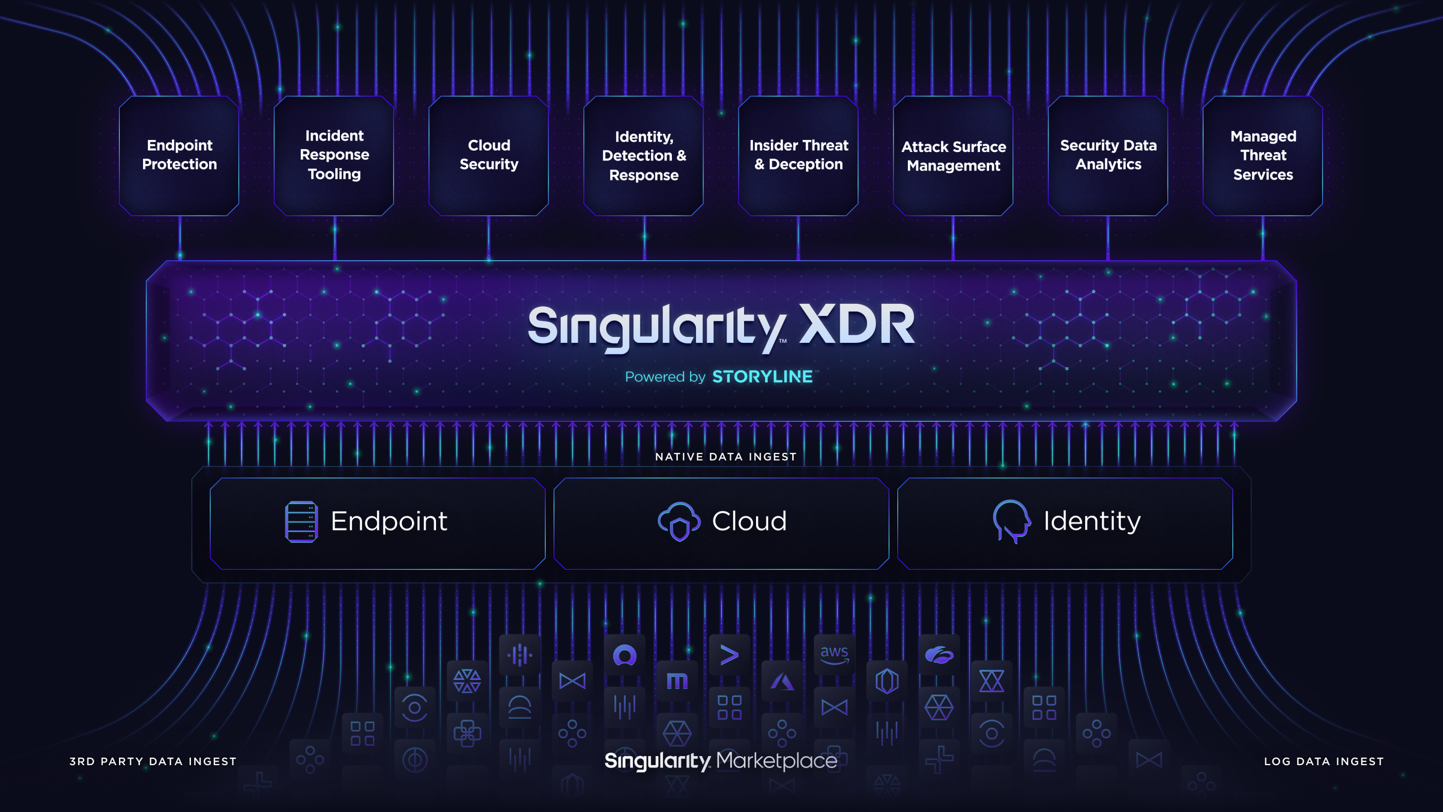
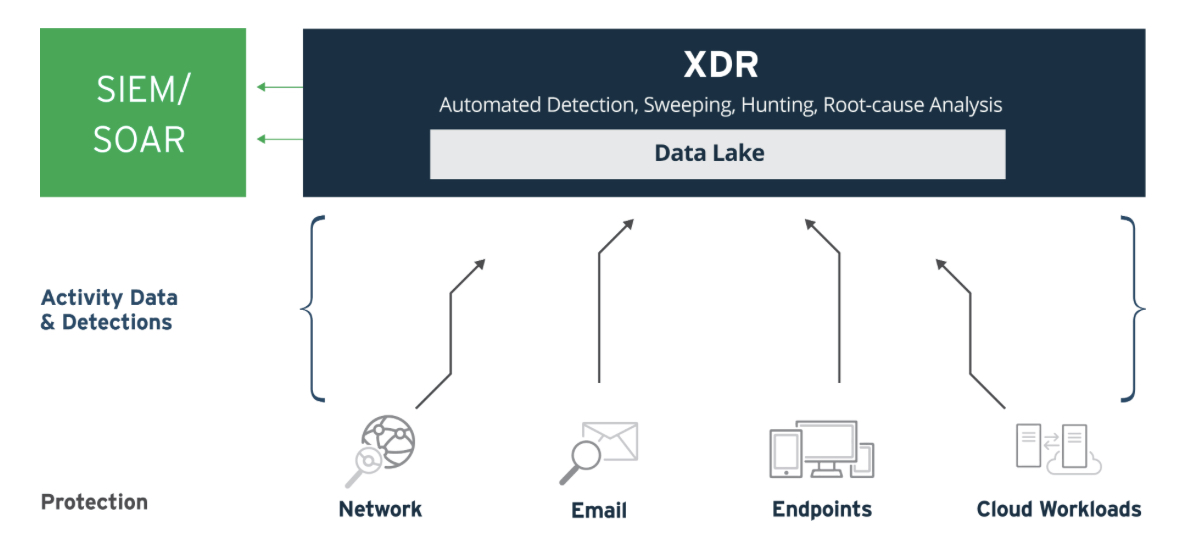
Managed detection and response (MDR) is a cybersecurity service that combines technology and human expertise to perform threat hunting, monitoring, and response. The main benefit of MDR is that it helps rapidly identify and limit the impact of threats without the need for additional staffing.
How MDR works?
MDR remotely monitors, detects, and responds to threats detected within your organization. An endpoint detection and response (EDR) tool typically provides the necessary visibility into security events on the endpoint.
Relevant threat intelligence, advanced analytics, and forensic data are passed to human analysts, who perform triage on alerts and determine the appropriate response to reduce the impact and risk of positive incidents. Finally, through a combination of human and machine capabilities, the threat is removed and the affected endpoint is restored to its pre-infected state.
Managed detection and response (MDR) is endpoint security “as a service.” This service manages endpoint security technologies for organizations which includes EDR. Service capabilities typically include: :
- Continuous monitoring
- Threat hunting
- Prioritization of threats and alerts
- Managed investigation services
- Guided response
- Managed remediation
The main benefit of MDR is that it helps rapidly identify and limit the impact of threats without the need for additional staffing. This is especially important given the global shortage of highly skilled cybersecurity professionals and the related skills gap, particularly as it relates to protection of cloud-based systems and assets.

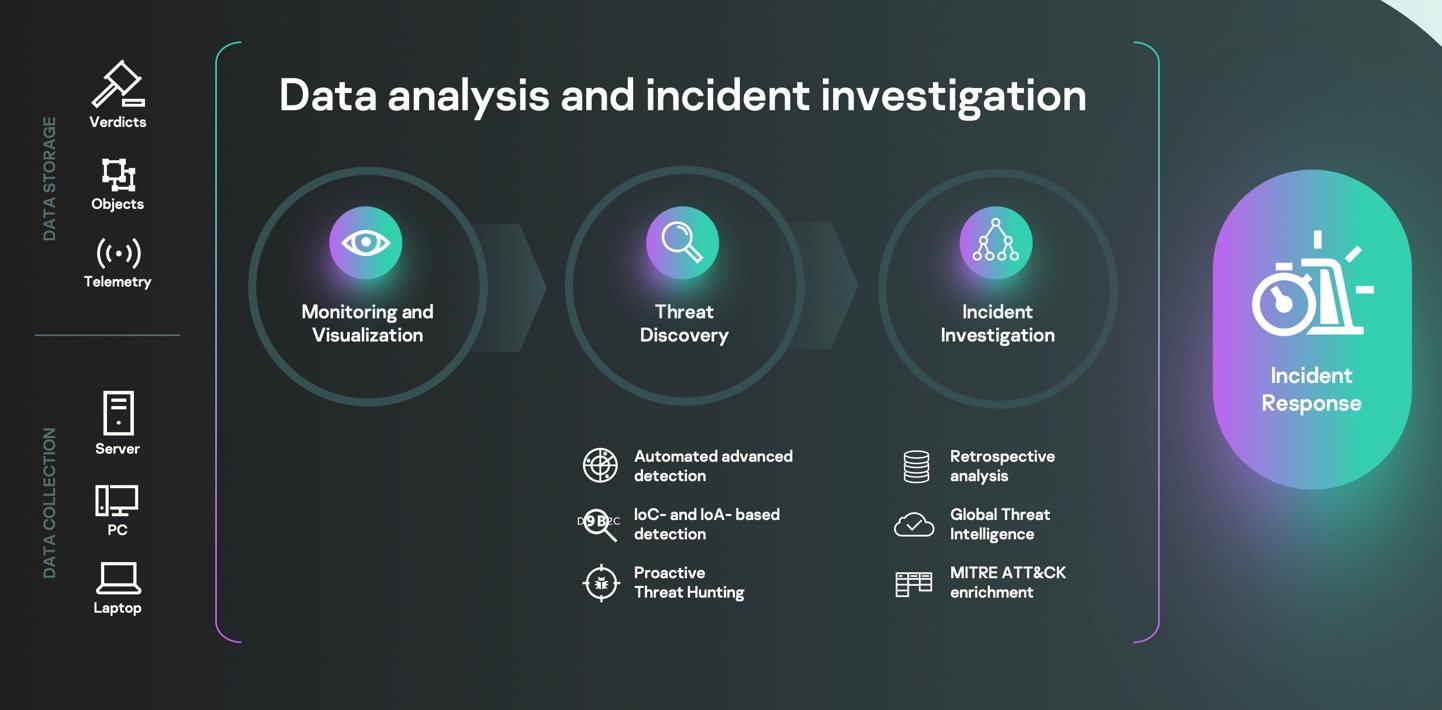
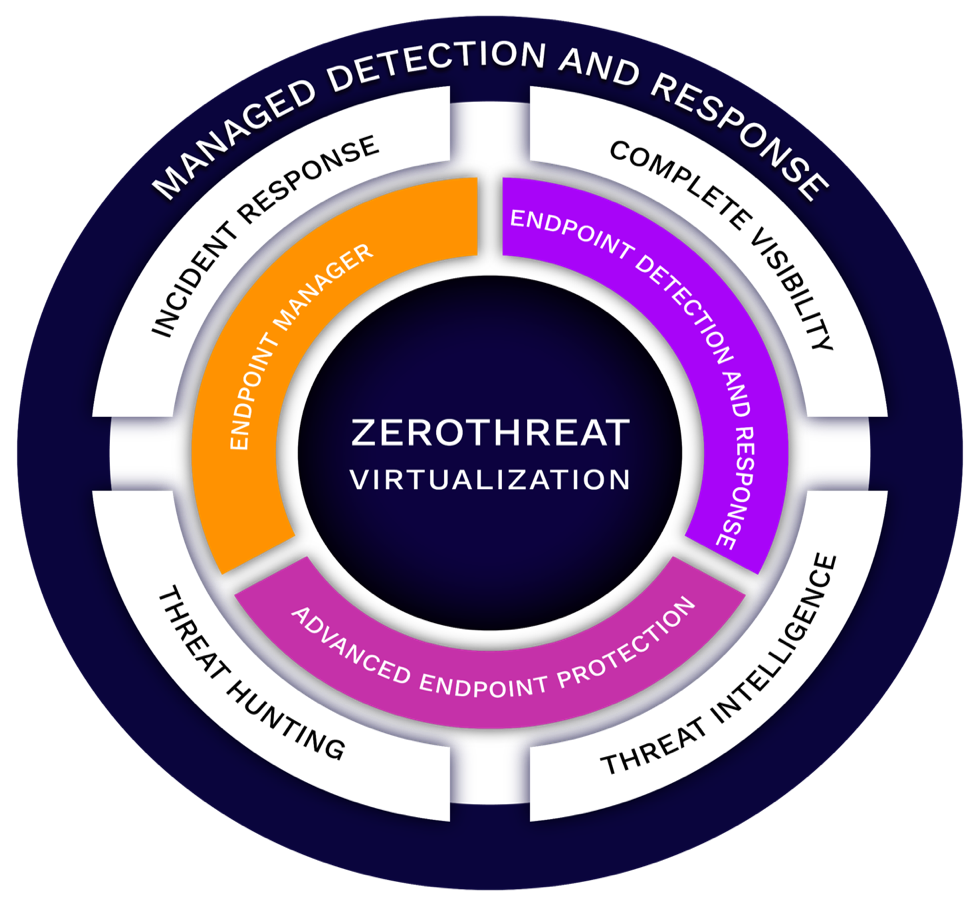
EDR vs. XDR vs. MDR
EDR is the baseline monitoring and threat detection tool for endpoints and the foundation for every cybersecurity strategy. This solution relies on software agents or sensors installed on endpoints to capture data, which it sends to a centralized repository for analysis.
XDR extends EDR capabilities to protect more than endpoints. The XDR solution “extends” across the infrastructure, streamlining security data ingestion, analysis and workflows across an organization’s entire security stack to enhance visibility around hidden and advanced threats, and to unify the response. When purchased as a managed solution, XDR will also provide access to experienced experts in threat hunting, threat intelligence and analytics.
MDR is essentially EDR purchased as a service. This service manages endpoint security and focuses on mitigating, eliminating and remediating threats with a dedicated, experienced security team.
Which solution is ideal for your organization?
Every organization’s needs are different. While security is imperative, it is important to select a security tool that provides the right level of coverage based on the risk profile of the business.
Choose EDR if your organization:
- Wants to improve its endpoint security posture and capabilities beyond NGAV
- Has a Infosec team that can act on alerts and recommendations produced by the EDR solution
- Is at the early stages of building a comprehensive cybersecurity strategy and wants to establish the foundation for a scalable security architecture
Choose XDR if your organization:
- Wants to enhance advanced threat detection
- Accelerate multi-domain threat analysis, investigation and hunting from a single console
- Is suffering from alert fatigue across a disconnected or siloed security architecture
- Wants to improve response time
- Wants to improve ROI across all security tools
Choose MDR if your organization:
- Does not have a mature detection and response program that can rapidly remediate advanced threats through existing tools or resources
- Wants to introduce new skills and build maturity without hiring additional staff
- Is struggling to fill skills gaps within the IT team or attract highly skilled, specialized talent
- Wants protection to stay current on the latest threats targeting organizations
อ้างอิงข้อมูล
EDR / XDR / MDR
https://www.crowdstrike.com/cybersecurity-101/endpoint-security/endpoint-detection-and-response-edr/
https://www.kaspersky.com/enterprise-security/edr-security-software-solution
https://www.sophos.com/en-us/products/endpoint-antivirus/edr
https://www.crowdstrike.com/cybersecurity-101/what-is-xdr/
https://www.sentinelone.com/platform/
https://www.kaspersky.com/enterprise-security/endpoint-detection-response-edr
https://www.sophos.com/en-us/products/endpoint-antivirus
https://www.xcitium.com/complete/?af=7639
https://www.crowdstrike.com/cybersecurity-101/managed-detection-and-response-mdr/
https://www.sentinelone.com/global-services/vigilance-respond/
https://www.xcitium.com/managed/?af=7639
https://www.crowdstrike.com/cybersecurity-101/endpoint-security/edr-vs-mdr-vs-xdr/



